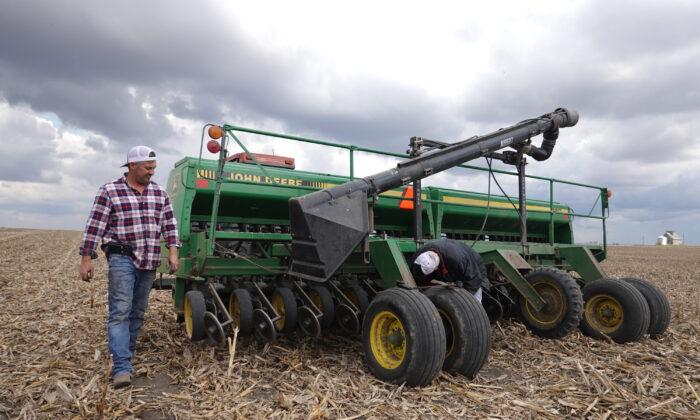WASHINGTON—The Trump administration expressed disappointment and frustration over Beijing’s slow progress on meeting its pledges in the “phase one” trade deal signed in mid-January.
The trade data for the first three months shows that China is far behind the pace necessary to meet its purchase target in 2020.
“While there has been progress on removing barriers to our exports, China’s purchases so far this year have been very disappointing,” a spokesperson for the U.S. Department of Agriculture (USDA) told The Epoch Times in an email.
Despite the outbreak, China has continued to import farm products.
“In particular, China has sourced imports from other suppliers this year, and our market share for a number of products has declined from 2017 levels despite the phase one agreement,” the spokesperson said.
The agreement states that China will increase its U.S. farm purchases by $12.5 billion this year and by $19.5 billion in 2021 from the 2017 baseline level of nearly $24 billion.
This means China has to import at least $80 billion of U.S. agricultural products over the next two years.
“There are steps China can take immediately to facilitate imports of U.S. products, steps we think are necessary for China to fulfill its commitments under the agreement,” the spokesperson said.
U.S. agriculture has been crucial for the phase one trade agreement, as China was the largest export market for U.S. farm products in 2017 before the trade war started.
Farmers were particularly hard hit by Beijing’s retaliatory tariffs. Nearly $30 billion of U.S. farm exports were subject to China’s tariffs, according to a report by the Center for Agricultural Trade at Virginia Tech. As a result of the conflict, U.S. agricultural exports to China decreased by 54 percent in 2018. Despite a slight uptick in 2019, exports are still well behind 2017 levels.
Trump said of the phase one deal in 2019, “There’s never been a deal of this magnitude for the American farmer.” He suggested farmers “buy more land and get bigger tractors.”
However, he voiced disappointment over China’s purchases recently and threatened to terminate the deal if Beijing fails to follow through on its promises.
He said on May 6 that he would report “in about a week or two” on whether he’s happy with China’s progress.
“I will be able to report on that at the end of next week. They’re buying a lot of farm products, but are they buying to the level that they were supposed to?”
Trump earlier indicated that he would consider new tariffs on Chinese goods for Beijing’s mishandling of the coronavirus outbreak.
When asked on May 6 whether he was still considering tariffs, he said: “I don’t want to talk about this. We’re in the midst of some very big things, so I just don’t want to talk about that now.”
The tensions between the United States and China have intensified in recent weeks, which could spill over into another trade war, according to experts.
China purchased $129.8 billion in U.S. goods in 2017 before the trade war began, and $57.6 billion in services, U.S. data shows.
The phase one pact requires China to increase its purchases by $76.7 billion in 2020 from the 2017 baseline level. That means China needs to buy more than $260 billion U.S. agricultural goods, manufactured goods, energy products, and services this year.
There’s progress being made on the phase one deal, particularly the removal of some nontariff barriers on agricultural access into China, according to Riley Walters, senior policy analyst and economist at The Heritage Foundation.
“The only problem is purchasing commitments,” he told The Epoch Times.
“When the deal was signed in January, no one thought China would be able to make the purchasing commitments then. And it’s certainly not going to be able to make it now unless there’s just this huge uptick.”





